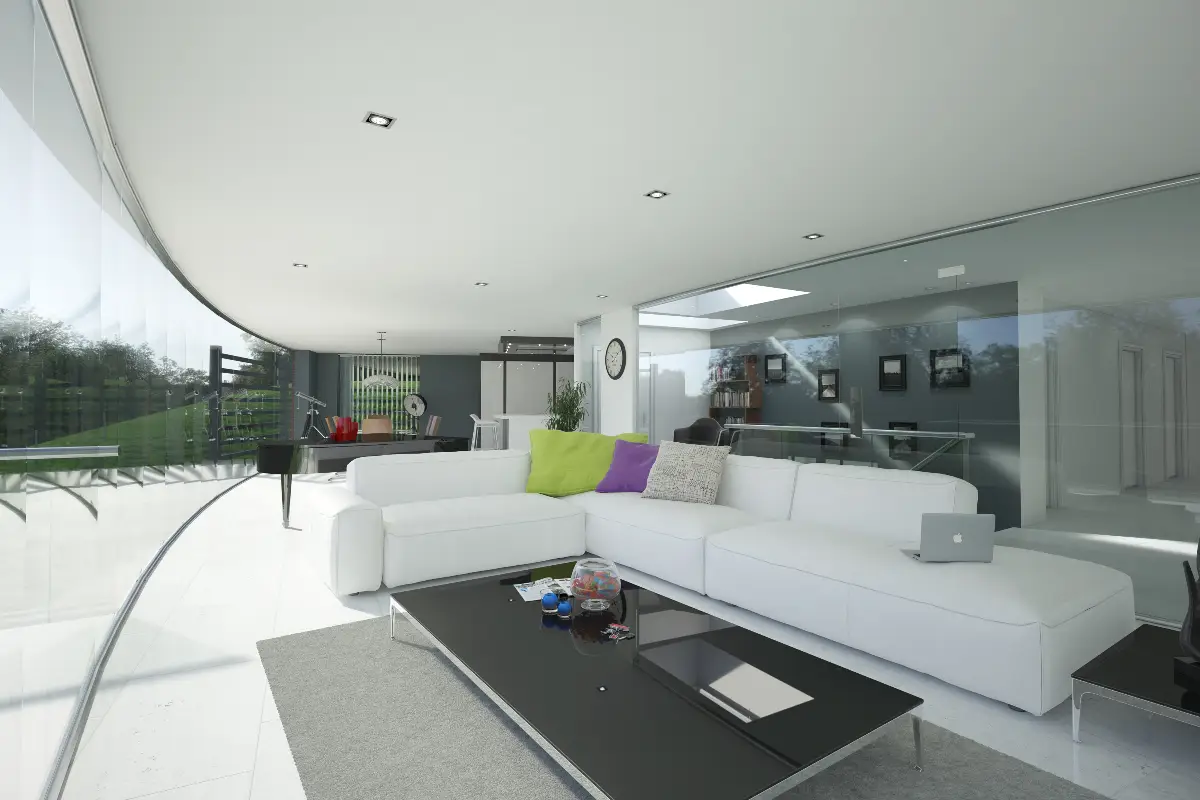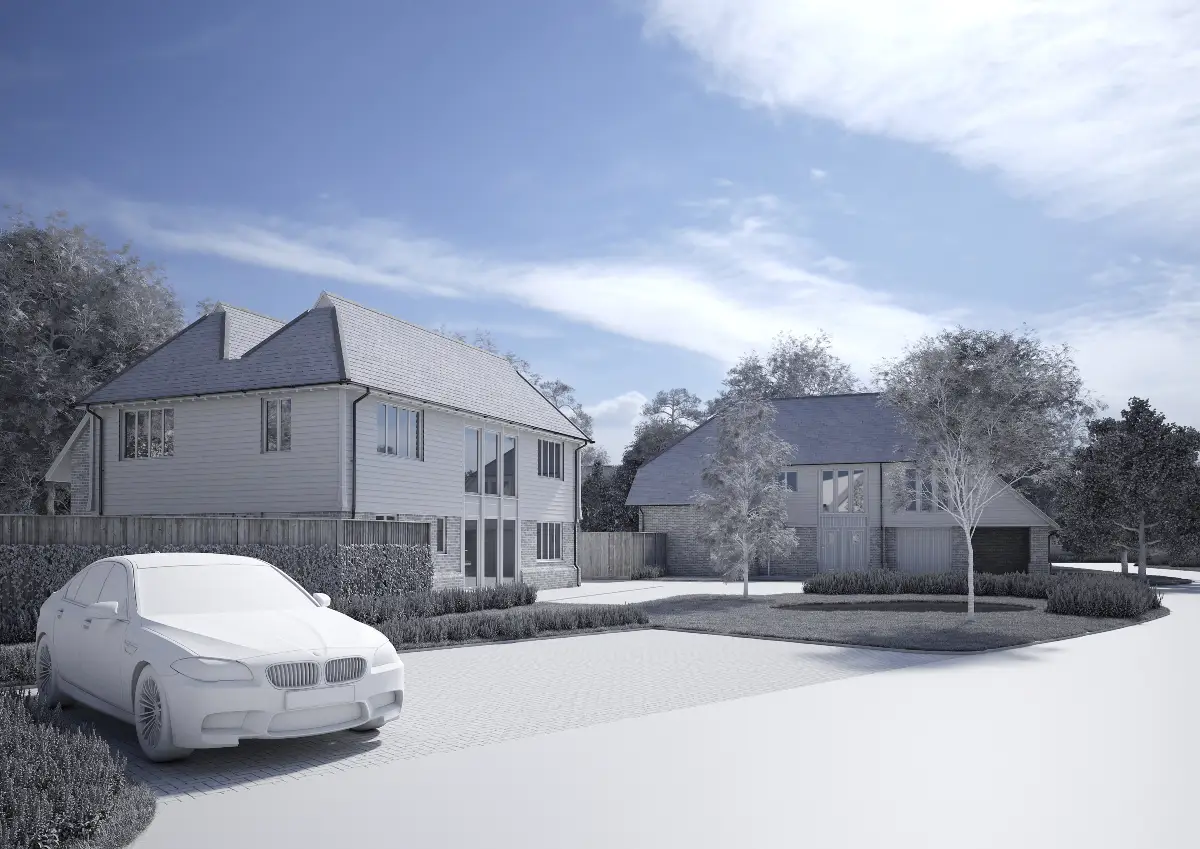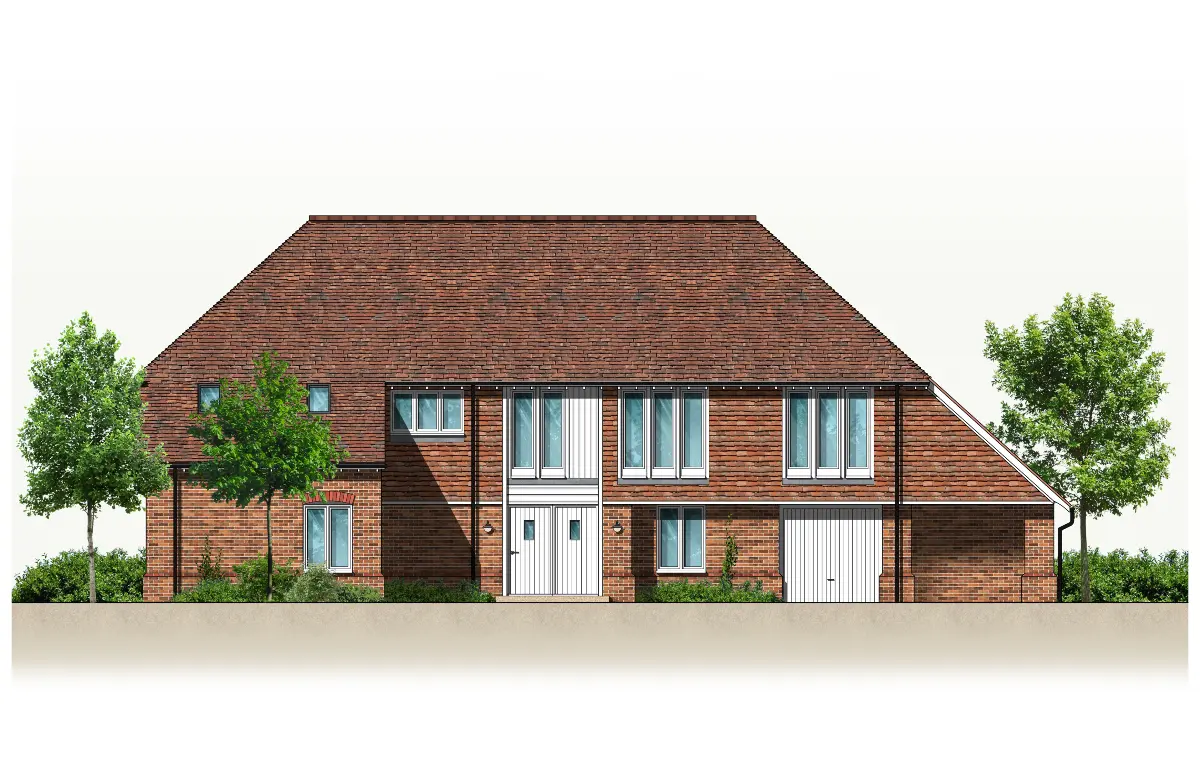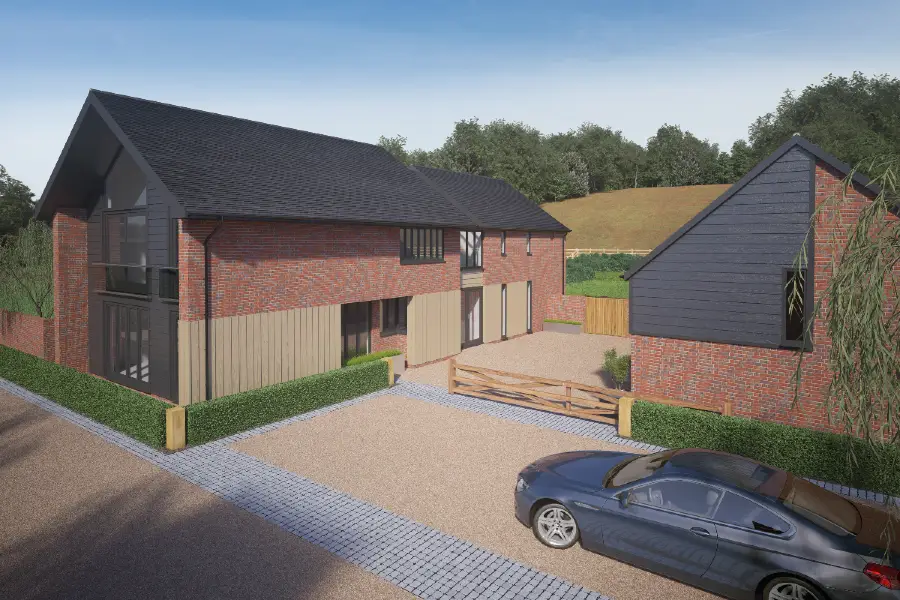Housing Development In Kent: A Landscape-Led Scheme In An AONB
New housing development within protected countryside
We helped our client, a private planning and development company, shape a unique housing development on the edge of a Kent village within the protected landscape of the Kent Downs Area of Outstanding Natural Beauty (AONB).
The scheme includes 20 bespoke homes - from affordable family houses to generous downsizer dwellings - set around a central green and carefully arranged to reflect the character and scale of a traditional rural village.
The site, located within the High Weald AONB, had previously been refused planning permission. The planning inspector had concerns about the impact of development on the protected rural landscape.
While rejecting the original 30-dwelling scheme, he left a narrow opening: if the village of Wittersham could demonstrate a genuine need for affordable housing, and if private funding was essential to deliver it, he could support a modest development.
Our client came forward with a proposal to meet the community’s affordable housing needs. They secured a conditional agreement with a local farmer, making this site the only viable option for delivering the required mix of homes.
Choosing Taylor Roberts To Design A Unique Housing Development
We’ve worked with the client for many years, supporting a range of residential masterplanning and housing development schemes that balance strong design with practical delivery.
When their initial proposal for the Wittersham site was refused, they came to us with confidence, knowing we could help navigate both the sensitive policy context and address the design challenges.
The Brief
A local housing needs survey showed a need for both affordable family homes and downsizer properties for older residents. These are medium-sized, single-storey homes for older residents who wished to remain in the village but move out of larger houses.
The brief was to create a residential layout that could deliver this housing mix alongside open-market homes while addressing the site’s sensitive location, environmental constraints, and planning history.
To gain support, the scheme had to demonstrate a clear public benefit and make a compelling case for new development in protected countryside.
The Design
The scheme is organised around a central community green, which includes a small play area and forms the heart of the development. Homes are dotted around the green, creating a loose, informal layout that echoes the character and charm of a traditional village.
The site is only accessible from one spot from a rural road, which helped shape a simpler, contained plan. This close-knit layout is in keeping with the landscape and helps soften the presence of new housing.
The Design Vision
The site doesn’t just lie within an AONB; it borders a Conservation Area. So sensitivity to context was essential.
Our vision was to create what we call “instant history;” a development that mirrors the layered, incremental growth typical of historic villages.
We achieved this by using a deliberate mix of architectural styles, placing contemporary homes as infill among more traditionally styled dwellings.
By varying styles, materials, and forms across the site, we created a sense of chronological evolvement and authenticity. The result is a scheme with a strong sense of place and wider market appeal.
The Housing Mix
The scheme includes 18 homes and two self-build plots.
Of the 18 homes, three are contemporary in style, while the remaining 15 are designed in a traditional vernacular style.
This mix allows for modern architecture to sit comfortably alongside traditional forms, adding variety without disrupting the area’s rural character.
The Affordable Homes
The scheme offers a range of affordable homes, including two- and three-bedroom homes for local families and generously sized single-storey dwellings designed for older residents. The downsizer properties were planned around practical needs, such as avoiding stairs, and go beyond minimum space standards.
Of the 18 homes, 12 are affordable or downsizer units, helping to meet the needs identified in the survey. To create a more balanced community, the affordable units are spread throughout the site.
The five remaining homes are open-market properties located at the rear of the site. As the largest in the scheme, they help support overall viability through cross-subsidy. The two additional self-build homes are likely to be large family dwellings.
The Materials
Most of the homes were designed in a traditional Kentish vernacular style, using a carefully selected palette of local materials. These include red brickwork, tile hanging, and timber weatherboarding, which echo the character of the surrounding villages.
Selected plots were designed using a more contemporary approach. These properties feature vertical larch cladding, zinc or zinc-slate roofs, and integrated photovoltaic panels.
This modern architectural language adds variety to the development while incorporating sustainable materials and low-carbon technologies in a visually distinctive way.
The Planning Application Approval Process
We reshaped the original proposals by reducing the number of homes, adding green buffers, and shifting to a more landscape-led strategy.
The revised scheme provides much-needed affordable and downsizer homes while fitting sensitively into the surrounding landscape.
The planning officer ultimately agreed that the public benefits clearly outweighed the limited impact on the protected setting. As a result, we gained permission for a site once considered undeliverable.
Next steps
At the time of writing, the site is on the market, with several possible outcomes being explored.
The Client’s Feedback
Securing planning permission was a major relief for the client. The application had been caught up in local politics for years, with strong opposition from those concerned about protecting the open landscape.
Given the substantial investment required to reach this stage, they were especially grateful to see their vision finally given the green light.
This project reflects our ethos when it comes to development. We don’t see these as generic housing estates, but as opportunities to create places with real character and identity. Even on greenfield sites, we aim to design with depth and imagination, considering how a village edge might have evolved over time.
As the scheme shows, we bring strong in-house design expertise in both traditional and contemporary architecture. This allows us to respond thoughtfully to each site’s context, planning requirements, and the client’s vision.
If you are planning a landscape-driven housing development in Kent, Taylor Roberts can support you with bespoke architectural services.
Our services cover the full development process: from early feasibility and design visuals to the delivery of residential and commercial projects. We support clients across Kent and the South East.
Call us on 01227 457 545 or email us on enquiries@taylorroberts.co.uk to discuss your project.
Contact our team today for expert property advice - book now for free.






.webp)

